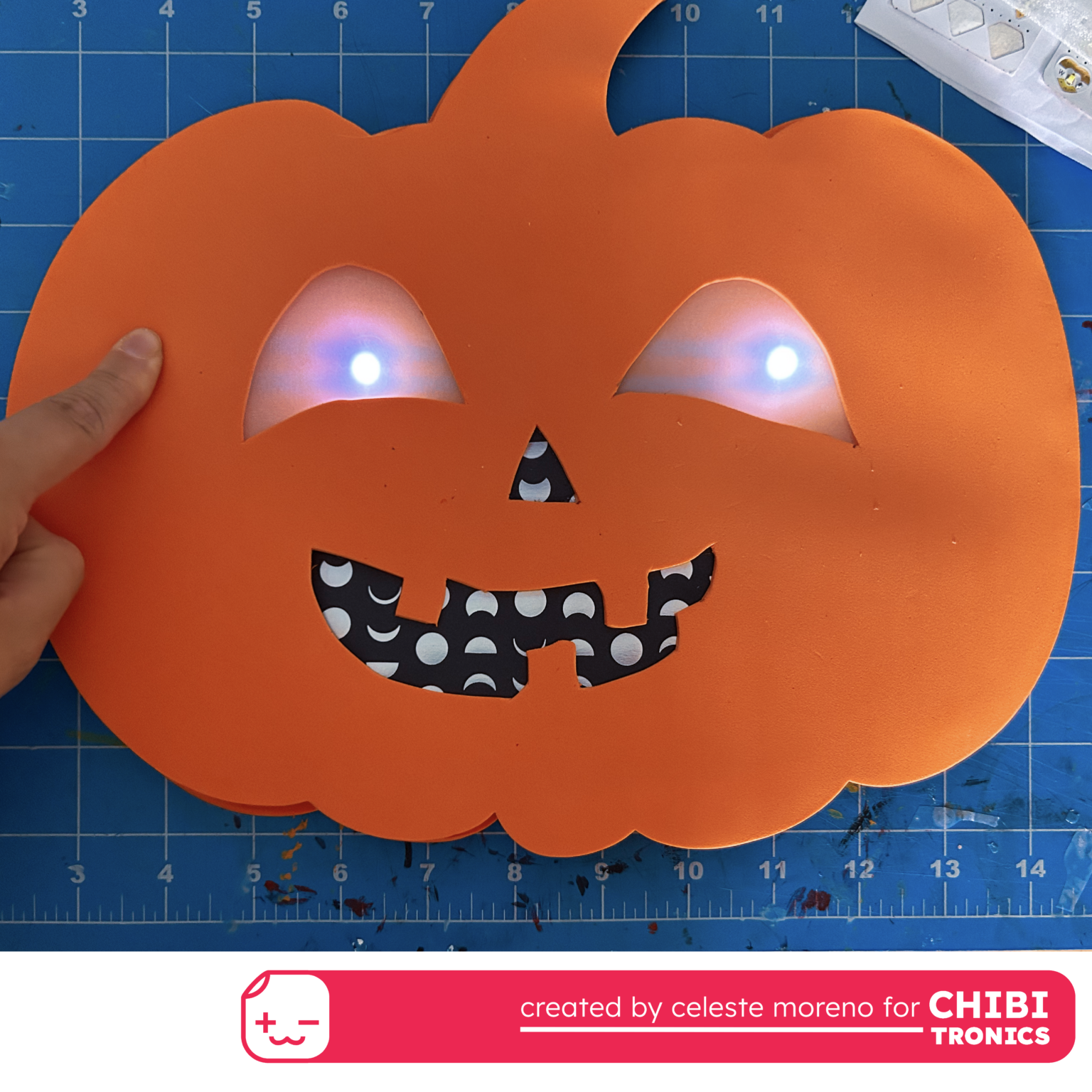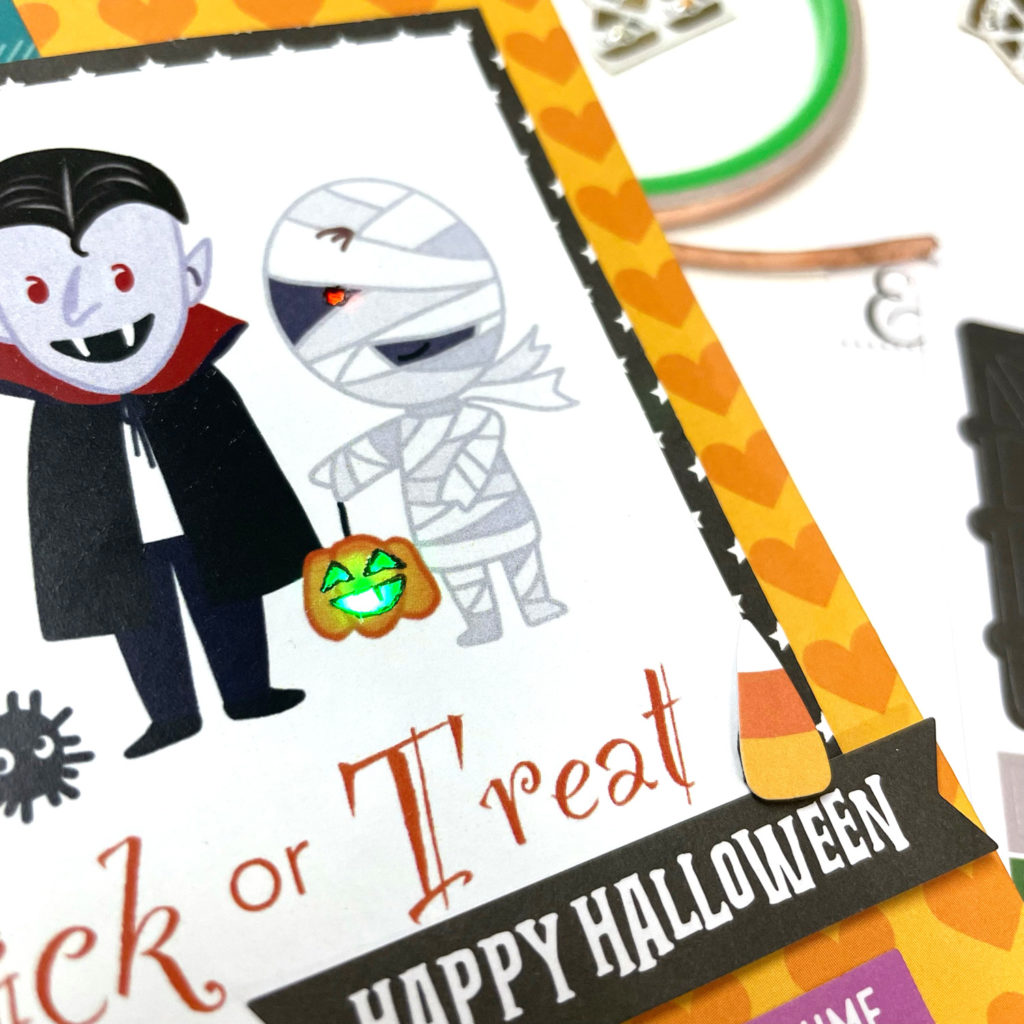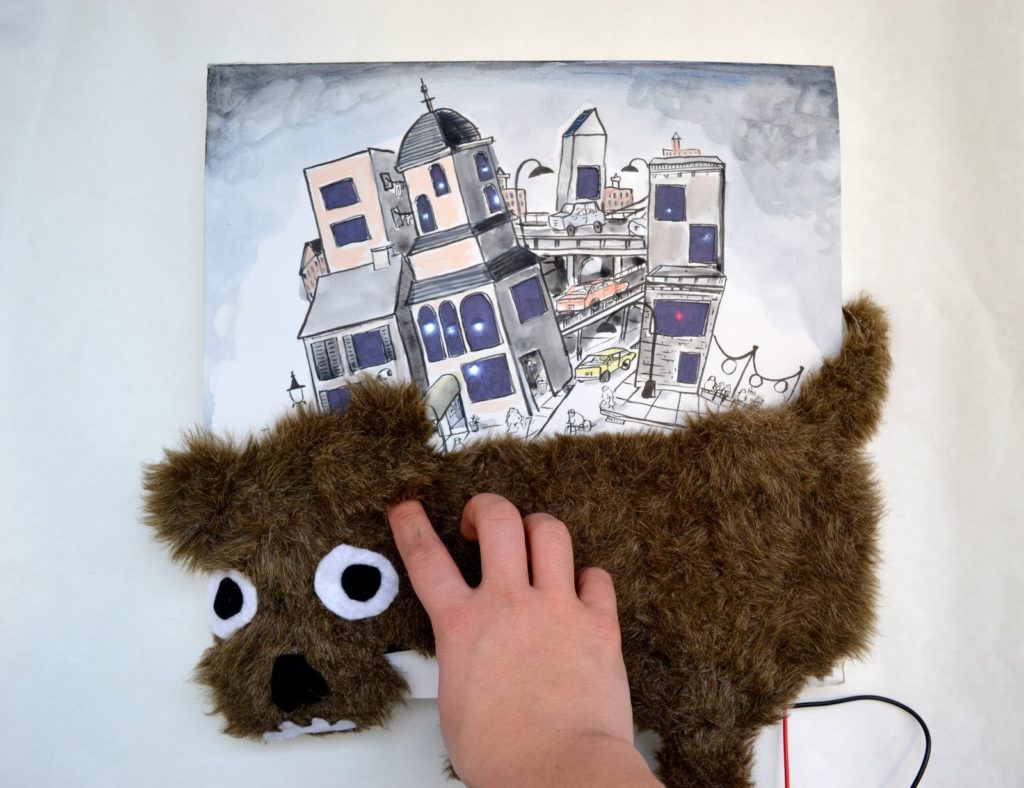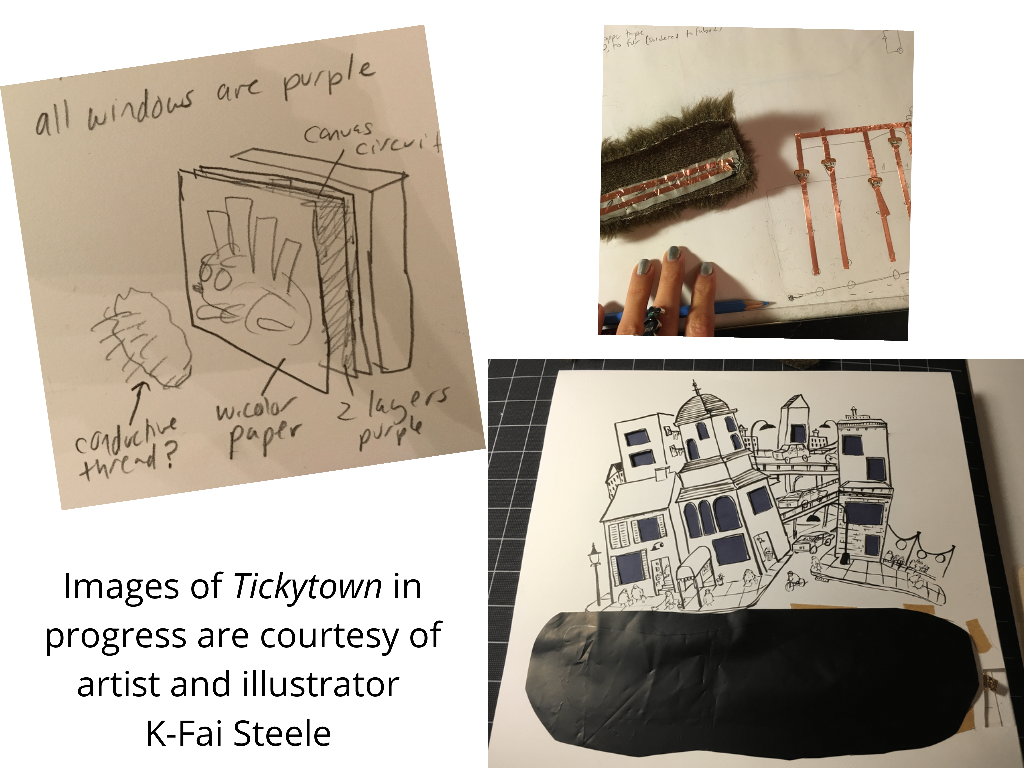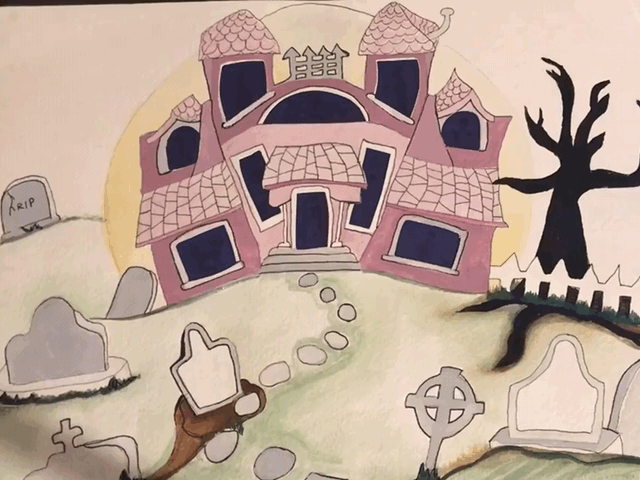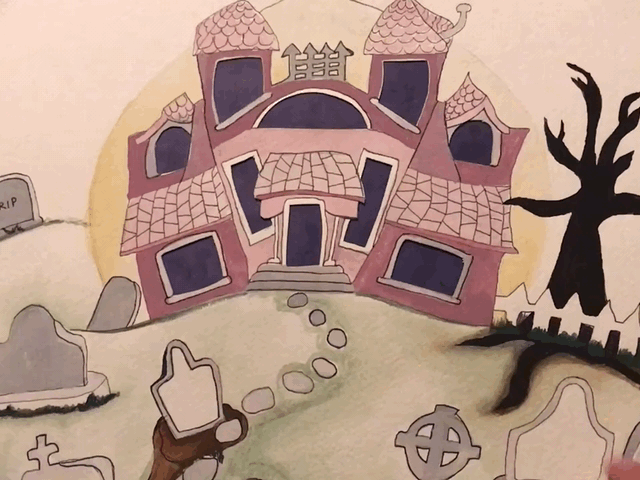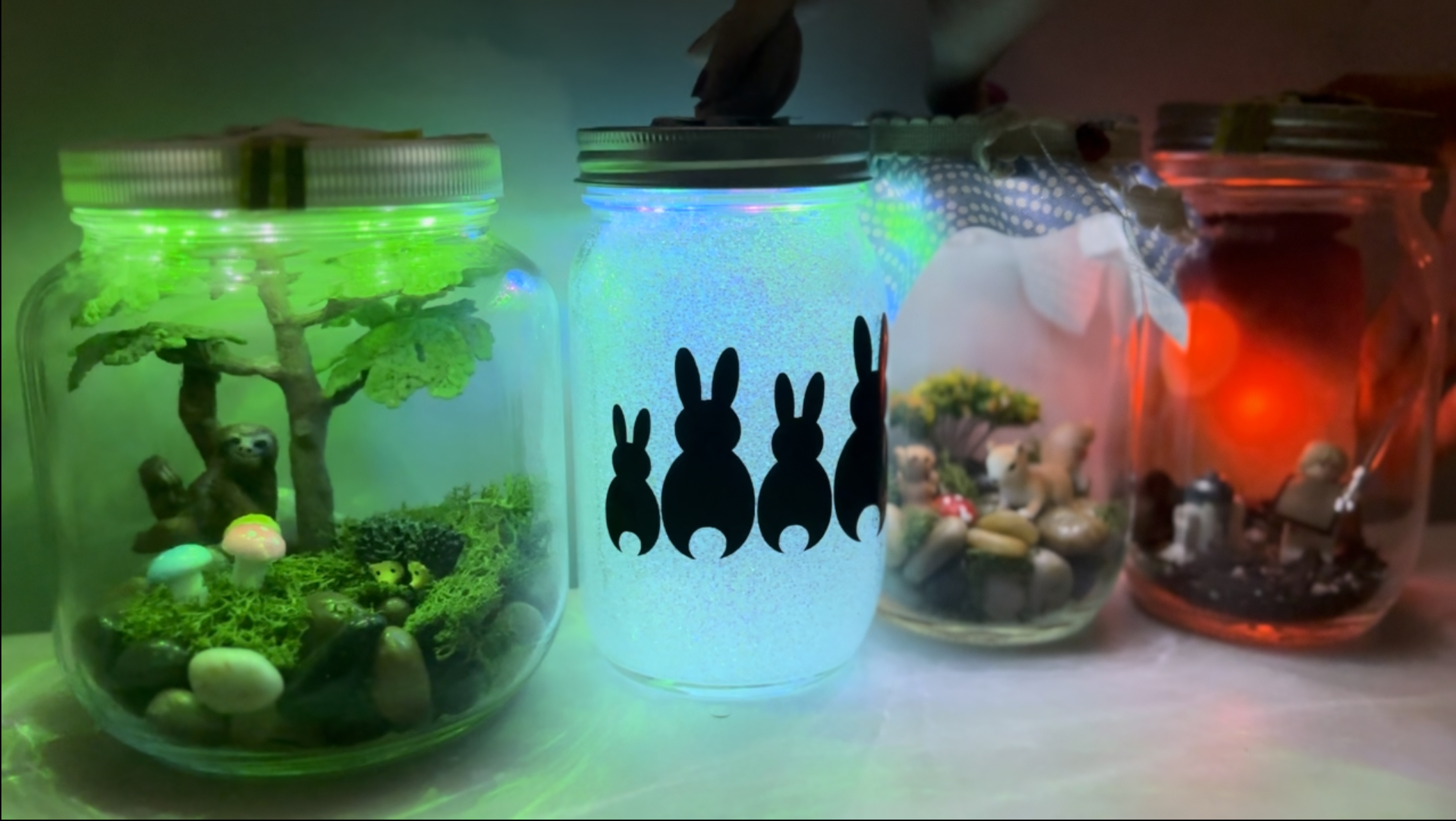
If you aren’t yet familiar with our Pressure Sensitive Conductive Plastic, and some of the ways that it might be used to add intrigue and interactivity to your cards, crafts, and creations, this post is for you!
As the name suggests, Pressure Sensitive Conductive Plastic is a type of plastic that conducts electricity, in varying amounts, based upon how much pressure is applied to it within a circuit. These properties will allow you to quickly (and easily) add special effects to your projects, while inviting others to interact with them.
Here, for your consideration, are 10 Ways to Use Pressure Sensitive Conductive Plastic!
1. Add Interactivity to Holiday Decor
Have you ever noticed how certain holiday decorations seem to scream for light?
Adding a small piece of Pressure Sensitive Conductive Plastic to the circuits in your holiday decorations can make it more likely that people will want to engage with them, if that is your objective. Since the surprising effects can only be observed when an object is being physically manipulated, Pressure Sensitive Plastic is well-suited to kid-friendly crafts.
To learn a handy trick for adding a novelty to your holiday decor, check out Celeste Moreno’s Bright Halloween Ideas: Using Chibitronics LED Stickers to Create Glowing Jack-O-Lantern Crafts.
In this fun and engaging project, simple enough for a child to make, Celeste demonstrates a fast and easy way to imbue drama into a craft foam jack-o-lantern.
Unlike a traditional on-off switch, in which the lights are either on or off, a switch made with Pressure Sensitive Conductive Plastic will cause your projects to glow with varying intensities of light, dependent upon the pressure applied by a finger.
2. Reveal a Hidden Message
Did you know that you can use the filtering properties of color and light to share a secret?
In her ingenious card design, Private Eye Brings a Message to You, Yukiko Inami deftly applies color theory with a DIY pressure sensor.
By pressing down on a square of Pressure Sensitive Conductive Plastic within her circuit, a red light causes red decoy markings to recede into the background. As this occurs, a concealed message, written in green, dramatically emerges in the foreground,

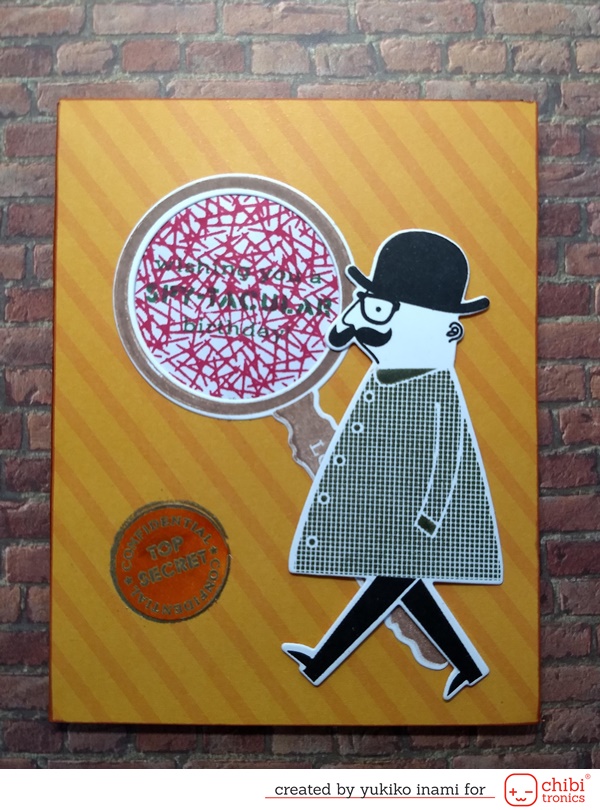
3. Add Surprise to a Notebook
Are you looking for a new way to add an element of surprise to your planner or a scrapbook layout?
In this post, Wei Wei Wang will show you how she incorporates a square of Pressure Sensitive Conductive Plastic to add a pleasing interactive element to a book cover.
By incorporating a circuit on the front of her notebook, and overlaying a Halloween-inspired layout on top, her Light Up Halloween Traveler’s Notebook Cover springs to life. To increase the intensity of the light, simply press down more firmly on the concealed switch!
4. Add a Simple Pressure Sensor to a Card
Have you been looking for a way to create an interactive, light-up card that can be sent through the mail without switching on when it’s not supposed to?
As part of the Chibitronics for Paper Crafters video series, Jessica Frost Ballas goes step-by-step through the process of adding a simple pressure sensor to a mailable, light-up card.
Applicable to any design you can imagine, Jess will show you how easy it is to create a mailable card that lights up, dependent upon how hard a pressure sensor is pressed.
5. Light Up Two Colors (One by One)
Did you know that you can make two different colors light up separately within the same circuit?
In her tutorial, Paper Circuits Art Technique: Use a pressure sensor to turn on two colors of LEDs, Jie Qi demonstrates how to create a circuit that lights two different colors at different times, depending upon how much pressure is applied to a concealed pressure sensor.
In her tutorial, Walk Around the Autumn Forest, Yukiko Inami demonstrates how to create a wreath with two LEDs that light up at slightly different times, to create movement in her design.
Tips, Tricks & Call-outs
The Pressure Sensitive Conductive Plastic we sell in our shop is more conductive, and more responsive, than the samples that are currently contained inside of our STEM Starter Kits. We are in the process of transitioning all of our kits to the more conductive version.
6. Make Artwork Touchable
Are you looking for a way to encourage a viewer to spend more time exploring a piece of artwork that you’ve made?
In K-Fai Steele’s inspiring work, Tickytown, created with an assist from Pressure Sensitive Conductive Plastic, an “overwhelmed terrier mutt has been overrun by ticks, forming the city of Tickytown on its back!” Viewers interacting with the piece are treated to sneak peeks into the secret lives of the town’s residents, whenever they pet or stroke the dog’s fur.
Inspired by Tickytown, I created two different versions of an interactive Haunted House using Pressure Sensitive Conductive Plastic for two different effects. One uses simple pressure sensors hidden under the gravestones to light up the windows, while the other lights up colors in sequence.
7. Light Up Colored LEDs in Sequence
Did you know that there is a way to make your colored LEDs turn on sequentially rather than all at once?
As part of her monthly video series, Chibitronics for Papercrafters, Jessica Frost Ballas demonstrates how to use Colored Lights with Pressure Sensors.
Watch her informative video to learn how adding a square of Pressure Sensitive Conductive Plastic to circuits containing colored LEDs will allow you to create the appearance of movement in your projects.
In Yukiko Inami’s stunning card, Jumping Up to Say “Happy Birthday,” a sequential rainbow of lights appears to propel a ninja into an explosion of stars.
Check out her tutorial to learn more about how different colors will light up at different times, allowing for the creation of surprising effects.
8. Animate a Story
Did you know that you can add interactivity to the page of a book by adding a circuit containing a simple pressure sensor?
To make a light up book more interactive, and to encourage more engagement from a viewer, adding a piece of Pressure Sensitive Conductive Plastic to the circuit will make it more fun to explore.
To learn more, and to access the free templates we’ve created for this project, please visit the Paper Circuit Accordion Book tutorial.
9. Bring a Flower to Life
Did you know that you can use paper circuits and Pressure Sensitive Conductive Plastic to create flowers that slowly spring to life?
In her video, Chibitronics – Paper Circuit Art Technique: Glowing Flower with Pressure Sensor, Jie Qi shows how she creates a bloom with radiating petals. In this example the petals are all the same color and turn on in sync with one another.
Using different colors of LEDs in a “Bloom Circuit” would be another way to bring a flower to life. This example, showing colored LEDs lighting in sequence, was created by our Design Team in 2020.
10. Illuminate a Mason Jar Fairy House
Did you know that you can create a pressure sensitive button on top of a mason jar lid that can be used to add a fun glow to the contents inside?
In her guest blog post, Mason Jar Fairy House with LED Stickers and a Pressure Switch, Krafti Karma shares a way to create a pressure sensitive push button that lights up a jar with a push of a finger!
Bonus: Learn More Through Experimentation
Are you interested in learning more, or looking for a fun series of experiments that you can conduct on your own or with students?
Chapter 5 of the Circuit Sticker Sketchbook contains a complete tutorial, video instruction, and a free downloadable template for creating your own pressure sensor.
To help you engage in experimentation, our Design Team from 2020 assembled 6 DIY Pressure Sensor Circuits that you can explore, to help inspire new ideas.

